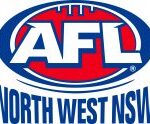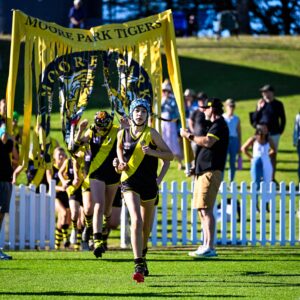AFL Women’s opens pathways for Indigenous girls

Originally published by the Sydney Morning Herald.
Seventeen-year-old Madena Jaffer goes to AFL training at Drummoyne Oval each week, but home for the year 12 student is much further away: the small town of Coen in far north Queensland, on the Cape York peninsula.
Jaffer is one of a dozen Indigenous boarding students at St Scholastica College in Glebe, for whom AFL has become a source of community while living far from home.
Like many of her peers, Jaffer grew up in a community that loved AFL. She began playing when she first moved to Sydney in year nine and, now in her final year of high school, she says AFL has offered her reprieve from the business of school and the city.
“I love it so much. It gets me away from all this busy school work and it’s fun going out and kicking the ball, handpassing and running around – just a bit of freedom,” she says. “But also to be around all the girls and the team, I’m able to build those relationships with my friends, especially being so far away.”
While Jaffer has always found joy in the sport, AFL has come to represent something bigger since the launch of the women’s competition in 2017.
“Before I just did it because of the community and because I love it, but now I have something more that I can do it for: my future,” she says. “In terms of where I see myself going, I look up to the AFLW and hopefully one day that’s where I want to be.”
But in the meantime, Jaffer says she is “taking it step by step, doing it because I love it.”
For Jaffer and her team mates, these steps involve growing through the AFL’s diversity talent pathways. Most have played in KickStart, a week-long championship for Indigenous players, where the most successful are eligible for selection in the Woomeras national program.
With the introduction of the women’s competition, the AFL has also brought in additional pathways for girls. The Catholic Girls Secondary Schools Sporting Association introduced a competition last year, where the St Scholastica’s girls came runners up.
Before the AFLW, Jaffa says she would talk to her dad – a Richmond supporter – about the men’s game. When she visits home these days, it’s a conversation with her dad, mum and “everyone in Coen”.
“Now when I sit down and talk to him about it, he really encourages me to keep playing, because now there is a future in it for women,” Jaffer says.
“He asks me how much I love it, he says little things like ‘you’re really good at it’, and things that really inspire me to do more. Being able to sit down and talk to my family about AFL is a big thing for us.”
It’s an experience common to many of the girls, who come from small or remote communities in Western Australia, the Northern Territory, far north Queensland and country NSW.
“If the AFL can build with them, it’s something that provides strong links to their community,” their teacher Jodie Osbourne says.
Osbourne has seen her school’s partnership with Drummoyne Power support many students in developing their sports skills and strong social networks throughout their time in Sydney.
“School’s a battle in itself, but in terms of what they do outside – their sport is their thing. That’s what they want to do, they want to be out playing,” she says. “They think they’re going to be professional AFL players.”
Keep up-to-date with all AFL Sydney Juniors related news by following us on Facebook.







